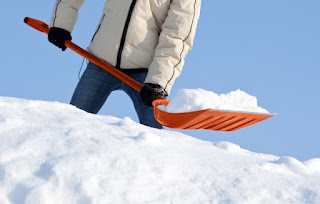
The New Year is quickly
approaching and it is time to start thinking about all the changes or
“resolutions” we would like to commit to.
The purpose of this article is to give you a head start on planning to
act on those resolutions that pertain to health and wellness.
GETTING
MORE EXERCISE: Always a popular
promise many individuals make to themselves going into the New Year. Unfortunately, many fail to engage in or
sustain a meaningful exercise program. Several
keys to making exercise work for you include scheduling exercise into daily
activities to make it as convenient as possible and choosing exercise activities
that you enjoy. Health benefits can be
realized in as little as 45 minutes, three times per week. Starting off slowly and easing into activity
will help prevent injuries. Be sure to
incorporate components of aerobic, resistance, and flexibility training to
ensure you are getting the full benefits of exercise.
NUTRITIONAL BALANCE: Sensible eating should
consist of nutritional balance with the correct proportion of quality
carbohydrates, proteins, and healthy fats.
Significant and positive changes can be made to your eating habits by
cutting down serving sizes, eliminating unhealthy snacking, and minimizing
foods that can be detrimental to your health.
Your body only functions as well as the fuel you put into it.
STRESS
MANAGEMENT: Unresolved
stresses can lead to many health problems if left unchecked. Changing the way we think about stress can be
the first step toward better health.
Some stresses can be avoided while others can be confronted and
resolved. There are certain stresses
that we cannot do anything about, so don’t fret about things beyond your
control. Rely on close family and friends
to help you through times of stress. The
New Year is a time of starting fresh, and letting go of things that prevent you
from enjoying life.
SLEEP: Important biological
mechanisms function during sleep hours to help our bodies recharge, recover,
and recuperate. The average adult
requires six to eight hours of restful sleep each night. As little as three
days of sleep deprivation has been shown to significantly compromise
productivity, create problems in relationships, and contribute to numerous
health problems. Restful sleep is
essential for good health and its importance should not be underestimated.
ELIMINATING
BAD HABITS: From
a health perspective, some of these may include quitting smoking, limiting
alcohol or caffeine intake, watching less TV, not brushing or flossing our
teeth regularly, or being ornery towards others. In reality, a list of bad health habits may
be longer for some than others. Commit
to eliminating three of your worst health habits and see how much better this
makes you feel.
For
additional information on how you can improve your health and wellness, visit
our website at www.nhwc.ca. From all of us at the New Hamburg Wellness
Centre, good luck and Season’s Greetings!
This
article is a basic summary for educational purposes only. It is not intended, and should not be
considered, as a replacement for consultation, diagnosis or treatment by a duly
licensed health practitioner.



















